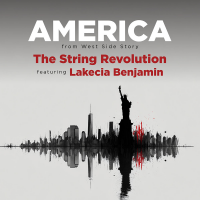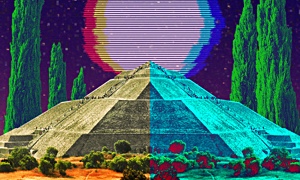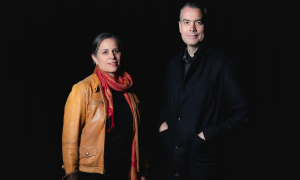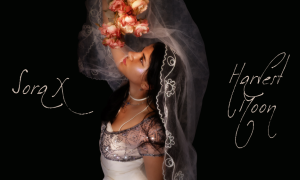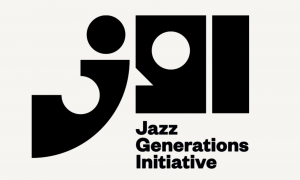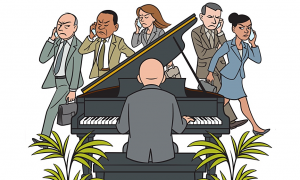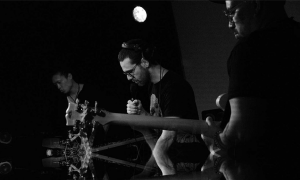"Jazz is dance music," Wynton Marsalis wrote in program notes earlier this year. “If it doesn't sound good, people won't want to dance to it. And if you can't dance to it, then it's not jazz." The statement, separating jazz and “not jazz," is the kind of shot-across-the-bow that Marsalis delights in lobbing at hostile parties, potential hostile parties, and imagined hostile parties. Defining “jazz" is Marsalis's great lexical quest, and he's long held central the idea that jazz must, in some way, be dance music. But what can he really mean? Few non-professional dancers would stand any shot at coherently moving to the vast majority of the post-Swing Era canon, including a tremendous amount of music that Marsalis considers jazz. Dancing to, say, Cecil Taylor would make even a seasoned fox trotter end up looking like this:
And much of Marsalis's own knotty, rhythmically intricate music would produce results that were almost as forbidding.
So Marsalis, a serious student and savvy cat, can't really mean that any jazz that doesn't lend itself to ballroom dancing isn't actually jazz. When he says “dance music," he seems to be talking first and foremost about swing—about the steady, syncopated snap of the drums and a jazz harmony that obeys the rules of traditional Western theory (even as it throws in a sharp 9 or two for rebellious effect). But just as important as swing, I think Marsalis is speaking to a certain way in which jazz interacts with society. When he says that jazz is dance music, he's trying to declare jazz, and the act of listening to jazz, to be social activities. He wants jazz to be folk music not art music.
A week ago, I attended the Richmond Folk Festival, a gathering that seems to define “folk music" like Marsalis might—it's social music, people's music, and most of it sounds nothing like Pete Seeger. The stars of the festival, at least from what I saw, were the 10-piece brass band No BS!, an exuberant unit that played a-ha's “Take On Me" and a suite dedicated to trombonist Reggie Pace's love for Kung-Fu movies. Like a lot of brass bands I've heard, from Levas Cruzadas in Buenos Aires to the Hot 8 in New Orleans, they played tight, bombastic music that impelled the audience to move—one might say, to dance.
No BS!'s music was fun, but even more than that, it was social—an observation that felt confirmed the next day when I put on their self-titled album. It was well recorded and inventive—tight funk with an ear for subtle hip-hop—but after a couple minutes I knew it wasn't the kind of music that I was going to listen to alone. I don't mean this as a slur on the album, but rather to say that it's party music, dance music. I'll save it for gatherings.
There isn't much music of any kind being produced today that feels as profoundly communal as what I heard from No BS!. Music is now a good for personal consumption—a trend that's been growing ever since the first recording—and that means that a different kind of music gets made. Music has become increasingly separated from social functions and increasingly evaluated in the narrow sphere of aesthetics—a point that the Canadian rock critic Carl Wilson speaks to in his exploration of Celine Dion's appeal and lack there of, Let's Talk About Love: A Journey to the End of Taste.
Great non-danceable jazz isn't solely “good music to listen to while you're making aesthetic judgments," but it's music that often demands obsessive attention, repeated listenings, and even study. Your work is eventually rewarded, but it doesn't change the fact that it's work. A common lament among non-jazz fans is that jazz sounds “too complicated," that you need a serious education in the music's history, theory, and practice before you can really appreciate it. The jazz fan's most common rebuke goes something like, “yes, the music can be complicated, but it still functions at a visceral level. The freest, most “out" music still has a rhythmic pulse, and you can dance to it all the way from here to the Time Warner Center (take that Wynton)!"
The footnote to that comment is a warning: “serious listening effort still required." And serious listening effort, as Wilson notes, isn't what you want to be expending in most situations. Put me in a small, dark New York club with David S. Ware, and I'm going to be absolutely transfixed. Put me at a barbecue with twenty friends, drinking beer and chatting, and I'm going to need music that's way simpler.
And that's why more and more, brass bands like No BS! seem like the jazz units best suited for the many occasions in which we prefer “easy listening." (I'm using “easy" to connote the rich, laid-back moments of “the livin' is easy. Fish are jumpin' And the cotton is high.") Take New Orleans, a city in which I spent a few days this summer, that is (not coincidentally) Wynton Marsalis's birthplace. The city is full of brass bands and the brass-band philosophy of music reigns. Brass bands perform every night in small local clubs. People who live nearby come to dance to the music, drink to the music, eat barbecued wings on the street to the faint (but still pulsing) strains of the music.
New Orleans is the birthplace of jazz and it, more than other city in the country, retains the idea that live music is a crucial element of social life. “Going out" in New Orleans means going to venues with live music. “Going out" in New York or Chicago or Los Angeles almost never means this. Hearing live music in most of America is called “going to a concert," which happens before you “go out" to a bar or a club with a DJ (or just the bartender's iPod).
The end of live-music-as-social-function has left jazz in the dust. Jazz is best appreciated night after night in intimate settings, whether it's a brass band like No BS! or a more difficult act like the aforementioned David S. Ware. Jazz has never quite figured out how to be “spectacle music" like stadium rock and pop (the predominant way in which people now think of “live music") and as a result it's heard less and less. I'd bet that the drop in jazz listenership, famously trumpeted last summer in Terry Teachout's essay “Can Jazz Be Saved?", has more to do with changes in the way Americans consume live music than a growing aversion to jazz itself.
Maybe there's hope in the brass band clubs in New Orleans and the ecstatic No BS! crowds in Richmond—the music finds a relationship with the audience far different from what you'd experience in a listening room or an arena. It's an attractive relationship, one in which the music seems to nourish a rich and casual life. It doesn't lend itself to the spectacular or the transcendent, but it's just as profound in its way: the everyday becomes a dance.
And much of Marsalis's own knotty, rhythmically intricate music would produce results that were almost as forbidding.
So Marsalis, a serious student and savvy cat, can't really mean that any jazz that doesn't lend itself to ballroom dancing isn't actually jazz. When he says “dance music," he seems to be talking first and foremost about swing—about the steady, syncopated snap of the drums and a jazz harmony that obeys the rules of traditional Western theory (even as it throws in a sharp 9 or two for rebellious effect). But just as important as swing, I think Marsalis is speaking to a certain way in which jazz interacts with society. When he says that jazz is dance music, he's trying to declare jazz, and the act of listening to jazz, to be social activities. He wants jazz to be folk music not art music.
A week ago, I attended the Richmond Folk Festival, a gathering that seems to define “folk music" like Marsalis might—it's social music, people's music, and most of it sounds nothing like Pete Seeger. The stars of the festival, at least from what I saw, were the 10-piece brass band No BS!, an exuberant unit that played a-ha's “Take On Me" and a suite dedicated to trombonist Reggie Pace's love for Kung-Fu movies. Like a lot of brass bands I've heard, from Levas Cruzadas in Buenos Aires to the Hot 8 in New Orleans, they played tight, bombastic music that impelled the audience to move—one might say, to dance.
No BS!'s music was fun, but even more than that, it was social—an observation that felt confirmed the next day when I put on their self-titled album. It was well recorded and inventive—tight funk with an ear for subtle hip-hop—but after a couple minutes I knew it wasn't the kind of music that I was going to listen to alone. I don't mean this as a slur on the album, but rather to say that it's party music, dance music. I'll save it for gatherings.
There isn't much music of any kind being produced today that feels as profoundly communal as what I heard from No BS!. Music is now a good for personal consumption—a trend that's been growing ever since the first recording—and that means that a different kind of music gets made. Music has become increasingly separated from social functions and increasingly evaluated in the narrow sphere of aesthetics—a point that the Canadian rock critic Carl Wilson speaks to in his exploration of Celine Dion's appeal and lack there of, Let's Talk About Love: A Journey to the End of Taste.
In daily life music is usually part of other activities, from dancing to housework to sex to gossip to dinner. In critical discourse it's as if the only action going on when music is playing is the activity of evaluating music? The question becomes, “Is this good music to listen to while you're making aesthetic judgments?" Which may explain what makes some bands critics' darlings: Sonic Youth, for instance, is not great music to dance to, but it's a terrific soundtrack for making aesthetic judgments...Celine Dion, on the other hand, is lousy music to make aesthetic judgments to, but might be excellent for having a first kiss, or burying your grandma, or breaking down in tears.
Great non-danceable jazz isn't solely “good music to listen to while you're making aesthetic judgments," but it's music that often demands obsessive attention, repeated listenings, and even study. Your work is eventually rewarded, but it doesn't change the fact that it's work. A common lament among non-jazz fans is that jazz sounds “too complicated," that you need a serious education in the music's history, theory, and practice before you can really appreciate it. The jazz fan's most common rebuke goes something like, “yes, the music can be complicated, but it still functions at a visceral level. The freest, most “out" music still has a rhythmic pulse, and you can dance to it all the way from here to the Time Warner Center (take that Wynton)!"
The footnote to that comment is a warning: “serious listening effort still required." And serious listening effort, as Wilson notes, isn't what you want to be expending in most situations. Put me in a small, dark New York club with David S. Ware, and I'm going to be absolutely transfixed. Put me at a barbecue with twenty friends, drinking beer and chatting, and I'm going to need music that's way simpler.
And that's why more and more, brass bands like No BS! seem like the jazz units best suited for the many occasions in which we prefer “easy listening." (I'm using “easy" to connote the rich, laid-back moments of “the livin' is easy. Fish are jumpin' And the cotton is high.") Take New Orleans, a city in which I spent a few days this summer, that is (not coincidentally) Wynton Marsalis's birthplace. The city is full of brass bands and the brass-band philosophy of music reigns. Brass bands perform every night in small local clubs. People who live nearby come to dance to the music, drink to the music, eat barbecued wings on the street to the faint (but still pulsing) strains of the music.
New Orleans is the birthplace of jazz and it, more than other city in the country, retains the idea that live music is a crucial element of social life. “Going out" in New Orleans means going to venues with live music. “Going out" in New York or Chicago or Los Angeles almost never means this. Hearing live music in most of America is called “going to a concert," which happens before you “go out" to a bar or a club with a DJ (or just the bartender's iPod).
The end of live-music-as-social-function has left jazz in the dust. Jazz is best appreciated night after night in intimate settings, whether it's a brass band like No BS! or a more difficult act like the aforementioned David S. Ware. Jazz has never quite figured out how to be “spectacle music" like stadium rock and pop (the predominant way in which people now think of “live music") and as a result it's heard less and less. I'd bet that the drop in jazz listenership, famously trumpeted last summer in Terry Teachout's essay “Can Jazz Be Saved?", has more to do with changes in the way Americans consume live music than a growing aversion to jazz itself.
Maybe there's hope in the brass band clubs in New Orleans and the ecstatic No BS! crowds in Richmond—the music finds a relationship with the audience far different from what you'd experience in a listening room or an arena. It's an attractive relationship, one in which the music seems to nourish a rich and casual life. It doesn't lend itself to the spectacular or the transcendent, but it's just as profound in its way: the everyday becomes a dance.






